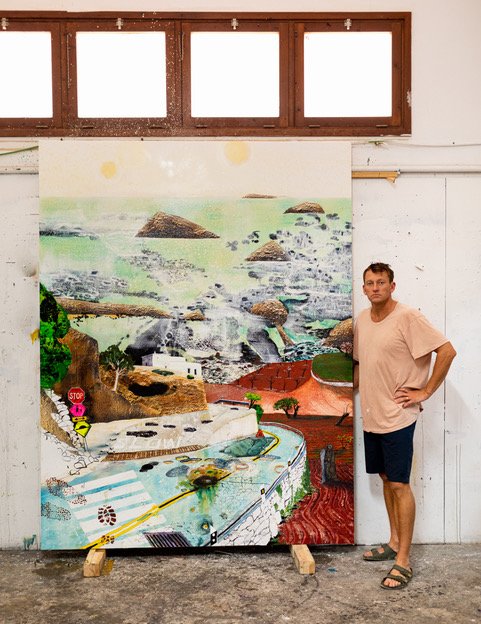Born in 1978, William Mackinnon lives and works between Ibiza, the UK and Australia.
William Mackinnon’s landscape paintings portray the world he inhabits with ebullience, wonder and whispers, perhaps, of terror.
Mackinnon’s vision captures the vastness of his domain in manners both terrestrial and emotional. Movement and displacement abound in his pictures too with dazzling painterly invention and compositional risk, Mackinnon suggests the notion that the extraordinary abounds in the mundane.
Conflicting, loaded messages give Mackinnon’s landscapes charge and depth: is this a place to rest? Is this a place to die? Menace and welcome in equal measure; light and darkness showing and obscuring in equal measure.
Strange things happen in the dark and it’s the darkness that permeates many of Mackinnon’s best paintings. Mackinnon allows the dark real primacy. Blackened areas abound; often dominating his compositions and offering juicy counterpunches to the light-filled and boisterous passages where content is visible and real. In the blast of his headlights, the road dazzles with reflective markers, swooping passing-lane stripes and glowing, orange panels with arrows indicating a hard left turn to come. But beyond that, beyond the turn, utter blackness. The Void. Inky, fathomless expanses abut his lit areas with such sheer tension as to suggest potential doom or potential bliss. It becomes clear that these blackened fields are not really empty at all. No, Mackinnon’s “empty” spaces behave with all the fecund possibility - of bounty, of menace - that the imagination dares to ignite. Look into the dark spaces and there is nothing to “see” there, nothing is rendered, and yet all is perceptible. The dark stares right back at us, pregnant with the scary shit we cannot see. So while there is pictorial absence - blankness, depth, openness, what painters call “negative space” - this is also fertile acreage for great emotional density, as the viewer can’t help but load the space with content, expectation and possibility. The anti-void is what it has become.
Alex Weinstein
Los Angeles, 2014

